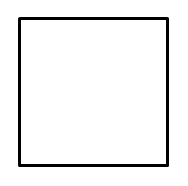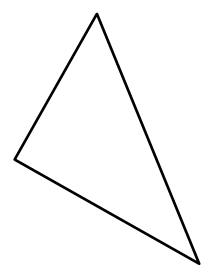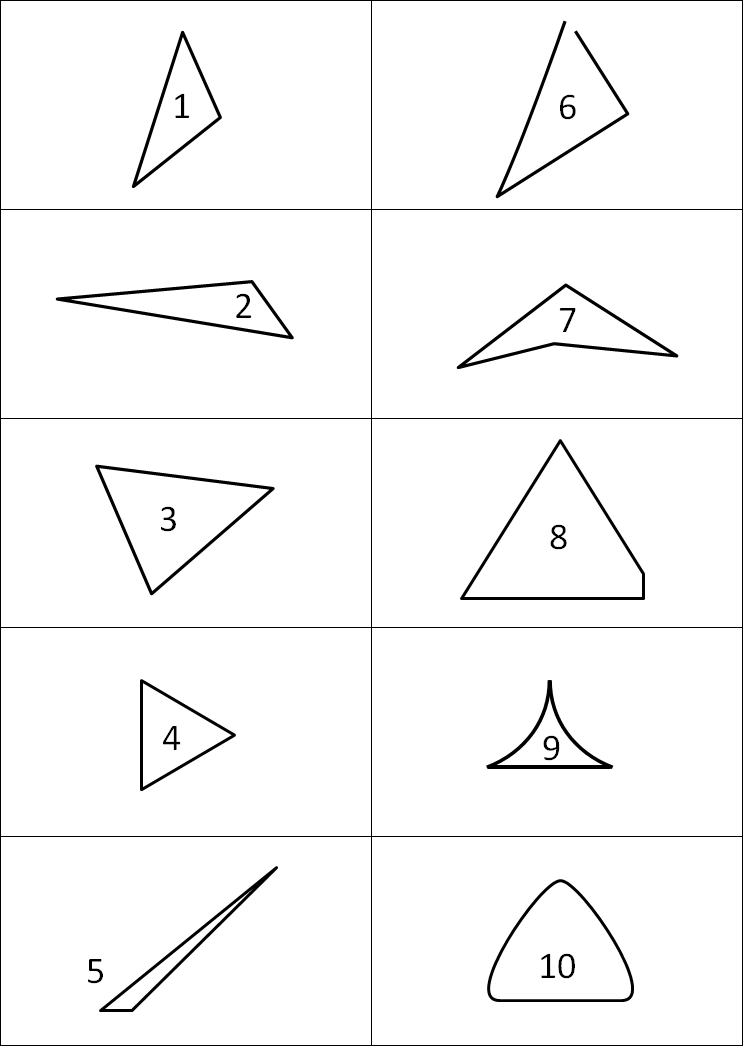Or search by topic
Number and algebra
Geometry and measure
Probability and statistics
Working mathematically
Advanced mathematics
For younger learners
Triangle or No Triangle?



Here is a shape:

What do you know about it?
Once you've had a think, click on the buttons below to find out what some other children have said.
Cora said:
"This shape has four sides. All the sides are black."
Omar said:
"There are four corners, and the sides that connect them are all straight."
Farrah said:
"The sides of the shape are all the same length."
Dan said:
"If you drew this shape on a piece of paper, the bottom of the shape would line up with the bottom of the piece of paper."
Which of those properties tell us that this is a square?
Choose one of the facts. If we changed it, would the new shape still be a square?
Which facts are not important?
Now we're going to think about some other shape properties. Here is a new shape:

What do you know about this shape?
How would you convince someone else that what you are thinking is true?
There are more shapes in this table:

Which of these shapes are triangles?
Which aren't triangles?
How do you know?
This problem is inspired by Clements and Sarama's article 'Young Children's Ideas about Geometric Shapes', which was first published in 2000 within an NCTM journal 'Teaching Children Mathematics'. You can read the full article here.
You may be interested in the other problems in our Multiple Representations Feature.
You may also like
Let's Investigate Triangles
Vincent and Tara are making triangles with the class construction set. They have a pile of strips of different lengths. How many different triangles can they make?
Three Fingers and a Loop of String
Using a loop of string stretched around three of your fingers, what different triangles can you make? Draw them and sort them into groups.

